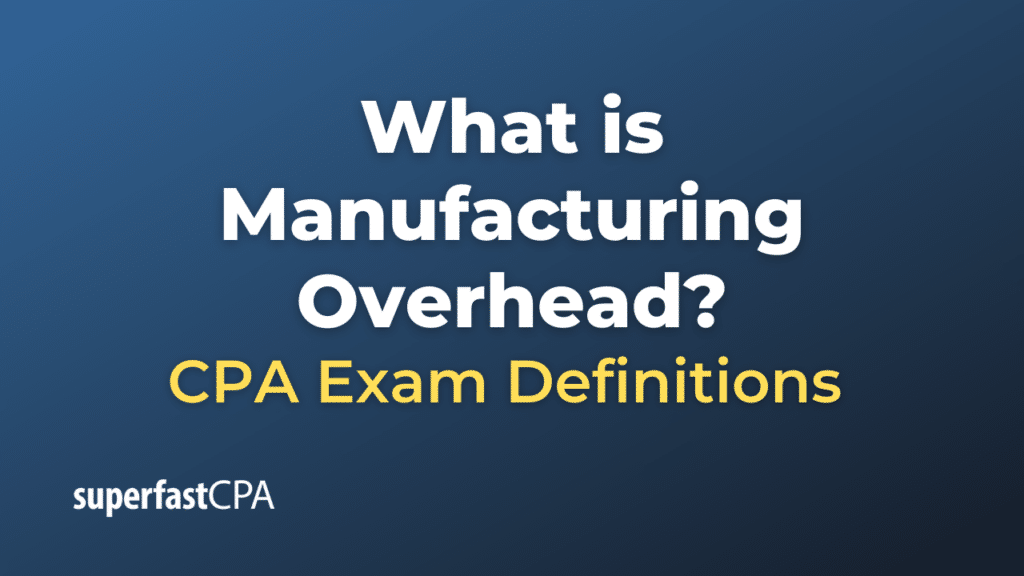Manufacturing Overhead
Manufacturing overhead, also known as factory or production overhead, includes all costs related to manufacturing a product that cannot be traced directly to specific units of the product. These costs include indirect materials, indirect labor, and all other manufacturing costs that are not directly linked to the production of a specific product.
Here are some examples of manufacturing overhead costs:
- Indirect Materials: These are materials used in the production process that cannot be traced directly to a specific product. For example, lubricants for machines, cleaning supplies for equipment, and small items like screws or nails.
- Indirect Labor: These are labor costs for employees that do not directly work on the product but support the production process. Examples include maintenance staff, factory supervisors, and quality control personnel.
- Other Costs: Other costs include depreciation or rental of factory equipment, property taxes on the manufacturing facility, insurance of the manufacturing facility, utilities such as electricity, water, and gas used in the factory, and repair and maintenance of factory equipment.
It’s important to note that manufacturing overhead costs are usually allocated to individual units of product using some form of allocation base, such as direct labor hours or machine hours. This is done to ensure that the cost of each product unit includes a fair portion of the overhead costs, thereby providing a more accurate cost for each product.
Example of Manufacturing Overhead
Imagine you own a company that manufactures wooden furniture. You have costs associated with the raw materials (wood, screws, glue, etc.) and the labor costs for the carpenters who actually make the furniture. These are your direct materials and direct labor costs, respectively.
However, there are many other costs involved in running your manufacturing operation:
- Indirect Materials: You use sandpaper, small amounts of paint for touch-ups, and cleaning supplies to maintain your equipment. These are necessary for the overall manufacturing process but can’t be directly assigned to one specific piece of furniture. These are your indirect materials costs.
- Indirect Labor: You have a supervisor overseeing the factory floor, a janitorial staff cleaning the factory, and a technician maintaining your woodworking machines. These personnel are necessary for your operations, but they’re not directly involved in building the furniture. Their wages form part of your indirect labor costs.
- Other Overhead Costs: You also have costs for utilities like electricity and water, the depreciation of your manufacturing equipment, property taxes, and insurance for your factory.
All these costs — indirect materials, indirect labor, and other overhead costs — make up your manufacturing overhead.
So, if in a given period, you spend $1,000 on indirect materials, $2,000 on indirect labor, and $1,000 on other overhead costs (utilities, taxes, depreciation, etc.), your total manufacturing overhead for that period would be:
$1,000 (indirect materials) + $2,000 (indirect labor) + $1,000 (other costs) = $4,000
Thus, $4,000 is the total manufacturing overhead cost that needs to be allocated among the units of furniture you produced in that period.













